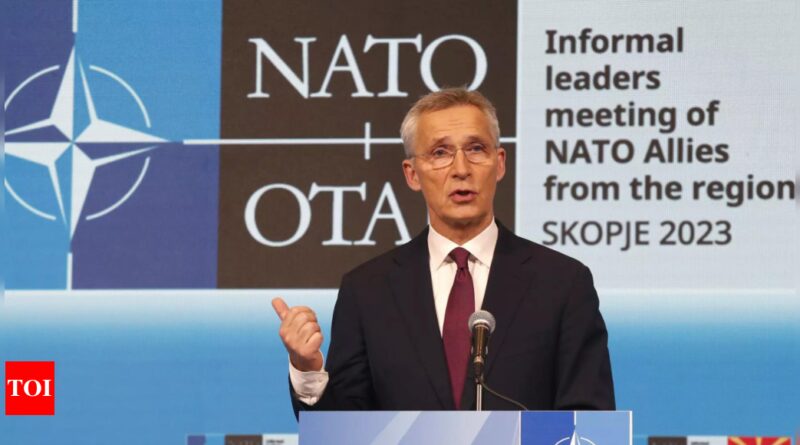Kremlin says Nato’s desire for a ‘military Schengen’ zone in Europe ratchets up tensions – Times of India
MOSCOW: The Kremlin said on Friday that Nato’s desire to have a military analogue of the Schengen Zone in Europe to allow the alliance’s armed forces to move around freely to counter Russia had ratcheted up tensions and was a cause for concern.
The chief of Nato’s logistics command JSEC, Lieutenant-General Alexander Sollfrank, told Reuters in an interview published on Thursday that he would like to see such a zone.
He said he was worried that too much red tape across Europe was hindering troop movements, a problem he said could cause major delays if a conflict with Russia were to erupt.
Nato is actively supporting Ukraine in its war against Russia and Kyiv hopes one day to join the alliance. However Nato itself is not at war with Russia, a situation which US president Joe Biden and other Western leaders say they want to avoid given Moscow’s vast nuclear arsenal.
Kremlin spokesman Dmitry Peskov said Moscow would respond if ‘the military Schengen‘ proposal became a reality.
“The alliance has always regarded our country as a so-called notional enemy. Now it openly considers our country to be an obvious adversary. This (statement) is nothing more than about fuelling tensions in Europe which has consequences,” Peskov told reporters.
He said talk of building a ‘military Schengen’ showed once again that Europe was unwilling to listen to Moscow’s legitimate concerns and was ready to boost its own security at Russia’s expense.
“It is Nato that is constantly moving its military infrastructure towards our border. We are not moving towards Nato infrastructure. Nato is moving towards us. And this cannot but cause concern and cannot but lead to retaliatory measures to ensure our own security,” said Peskov.
Since the end of the Cold War and the collapse of the Soviet Union, Nato has expanded some 1,000 kilometres (600 miles) eastwards, taking in former Warsaw Pact countries including Poland and the Baltic nations and multiplying the length of the alliance’s eastern flank to some 4,000 kilometres in total.
The chief of Nato’s logistics command JSEC, Lieutenant-General Alexander Sollfrank, told Reuters in an interview published on Thursday that he would like to see such a zone.
He said he was worried that too much red tape across Europe was hindering troop movements, a problem he said could cause major delays if a conflict with Russia were to erupt.
Nato is actively supporting Ukraine in its war against Russia and Kyiv hopes one day to join the alliance. However Nato itself is not at war with Russia, a situation which US president Joe Biden and other Western leaders say they want to avoid given Moscow’s vast nuclear arsenal.
Kremlin spokesman Dmitry Peskov said Moscow would respond if ‘the military Schengen‘ proposal became a reality.
“The alliance has always regarded our country as a so-called notional enemy. Now it openly considers our country to be an obvious adversary. This (statement) is nothing more than about fuelling tensions in Europe which has consequences,” Peskov told reporters.
He said talk of building a ‘military Schengen’ showed once again that Europe was unwilling to listen to Moscow’s legitimate concerns and was ready to boost its own security at Russia’s expense.
“It is Nato that is constantly moving its military infrastructure towards our border. We are not moving towards Nato infrastructure. Nato is moving towards us. And this cannot but cause concern and cannot but lead to retaliatory measures to ensure our own security,” said Peskov.
Since the end of the Cold War and the collapse of the Soviet Union, Nato has expanded some 1,000 kilometres (600 miles) eastwards, taking in former Warsaw Pact countries including Poland and the Baltic nations and multiplying the length of the alliance’s eastern flank to some 4,000 kilometres in total.


